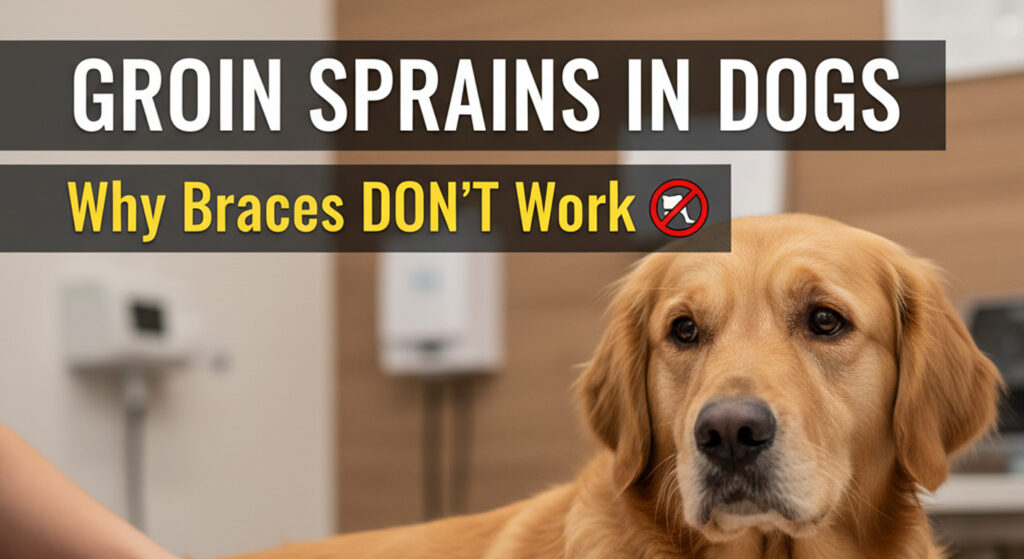
Hi everyone, Nikki here from Posh Dog Knee Braces. Today, let’s talk about a common but often misunderstood injury in dogs: a groin sprain. While we specialize in knee braces, it’s just as important to understand injuries that don’t require one, so you know how to help your dog get back on their paws.

A groin sprain is an injury to the muscles and tendons in the inner thigh, specifically the iliopsoas muscle group. These muscles connect the lower spine and pelvis to the femur (thigh bone), and they are essential for your dog’s mobility. They are responsible for flexing the hip and pulling the leg inward, making them critical for activities like running, jumping, and quickly changing direction.
Common Causes
Groin sprains often happen when the iliopsoas muscles are stretched beyond their normal capacity. Common causes include:
The symptoms of a groin sprain can be tricky because they often mimic other common injuries, like a cranial cruciate ligament (CCL) tear. This is why a proper veterinary diagnosis is so important.
Look for these signs in your dog:
If you notice any of these symptoms, it’s crucial to consult your veterinarian. Providing details about how the injury might have happened, such as your dog slipping, can help your vet reach the correct diagnosis.
Unlike a knee injury, a groin sprain is an internal muscle issue, not a joint instability. The injured iliopsoas muscles are located deep within the abdomen and pelvis. Because of this location, a traditional brace or external support device cannot effectively immobilize or support the damaged muscle to promote healing.
Instead, the key to recovery is conservative management.
The good news is that most groin sprains heal well with the right care. Your veterinarian may recommend a combination of the following:
Recovery times can vary depending on the severity of the sprain:
By understanding what a groin sprain is and how to properly care for it, you can help your dog get back to their happy, active self. Always remember to consult your vet for a correct diagnosis and a personalized treatment plan.
Do you have any questions about your dog’s mobility or other injuries you’ve noticed? Contact us today via our contact form or visit us on Facebook.